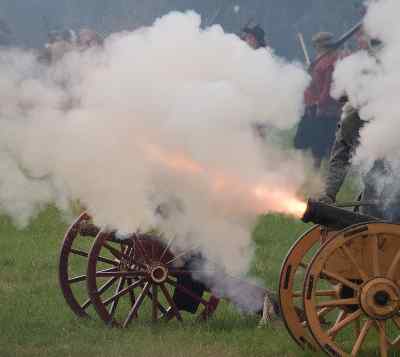How To Make Saltpeter

First you need a place to keep and mix everything. You will need a large container such as a barrel or a tarp, plastic or whatever. The thing to consider is you want a bottom that will not let all the valuable urine escape. Evaporation is OK, but you do not want the urine to ever just leave by flowing into the ground. The saltpeter bed will also need to be absolutely protected from rain. Rain water will wash away all of the salts that you are trying to collect and you want as little sunlight as possible.
Here is one very good method for manufacturing saltpeter beds. Collect a good supply of animal excrement. To make the bed you need a floor as stated earlier. The floor that doesn't ever collect water should be selected. A clay floor was traditionally made, but any impermeable floor material can be used. Next cover the floor of the bed with manure, wood ash and straws.
Now you need a roof to protect it from rain and sun. The roof that doesn't leak can be anything of your choosing. Wood, plastic, tin or a tarp are all acceptable.
If you want to improve on this, you could have drains or even a slope to allow you to collect runoff from the heap which can then be added to the top of the heap again or saved for a later time when the heap needs more liquid to keep it moist.
The saltpeter bed should be turned over to a depth of five or six inches every week, and the whole heap turned over every month. This will facilitate the entire bed producing and not just select parts that have the right conditions.
This entire process is long and is greatly influenced by the temperature of your climate. In the south it will be much quicker than in Michigan! In the south it might take 7 months. Up north it can take a year. It is extremely variable as materials used in the bed also affect the speed of nitrification.
During the last few months of the process do not add any more urine or anything else. ONLY add enough water to keep the bed moist. The reason for this is that un-decomposed organic matter will interfere with the separation of the saltpeter. So the process for the first few months is simply a decomposition phase where you are building up a large amount of decomposed organic matter. Better to go too long on the first phase than to move to the water only phase without a lot of really decomposed material.
As the bed ripens, the saltpeter is brought to the surface by evaporation, and appears as a whitish efflorescence. When this efflorescence appears the top couple of inches of material is separated and placed in its own heap where it is continued to be kept moist just like the original saltpeter bed.

Now back to the 75% that has been removed from the original bed. This removed 75% (nitrified earth) is now ready for leaching.
The process of leaching involves putting the nitrified earth into a vat, or tub, or barrel. Cover with straw. Add water. How much? If you have 2 parts of nitrified earth you need to add about 1 part of water. Stir and let sit for 12 hours. Drain off half of the water. Now add water again. Since you drained off half the water add that same amount back.
Let it sit for just a few minutes and again drain off half of the water. The first batch of water will have twice as much saltpeter as the second. Continue this process five or six times. This should have pulled almost all of the salts out of the nitrified earth. The now exhausted nitrified earth can now be thrown back onto the original bed or can be used to start an entirely new bed. The water collected from the nitrified earth we will call saltpeter ley.
The saltpeter ley (liquid) contains saltpeter as well as nitrate of lime and magnesia and chlorides of sodium and potassium. The next step is to convert all other nitrates into nitrate of potash. This is done by taking lots of hardwood ashes and mixing them into a vat of water. Stir, then let settle and then carefully pore or siphon off the liquid. The more ash the stronger the water will be.
Now you will need two containers ... One of wood ash water (lye) the other of saltpeter ley. The next step is to pour the wood ash water a little at a time into the saltpeter ley. As you do this you should see a whitish cloud appear. As you pour more and more wood ash water (lye) into the saltpeter lay, you will eventually notice that the white cloud is no longer produced. At this point you will not be helping by adding more wood ash water (lye).
Now allow the mixture to evaporate. A container that is more like a tray than a barrel will evaporate off the water more quickly. The evaporation portion can be done in batches.
Heat is now added to the solution to bring to a slow boil. So boil the saltpeter ley to begin concentrating the solution. Blood can be added to the mixture to encourage organic matter to rise to the top as scum and dipped out. Scoop out and discard any crystals that form while boiling. After a few hours of boiling the water can be filtered through something like cheese cloth to remove any solids. Hopefully there are few or none in which case this step would not be absolutely required.
The ley still contains common salt and some other impurities in smaller quantities. When the concentration has reached almost the point of saturation, the ley must be allowed to cool. You will know when this point has been reached by dropping a little bit of the boiling liquid onto a piece of metal. If it quickly crystallizes, it is time to stop the boiling.
Now that the liquid is boiled down but not completely boiled away let the liquid cool down, crystals will begin to appear. The first crystals that form will be various non-saltpeter crystals, rake these out. As the saltpeter is more soluble than the other salts. Eventually the crystals will form in a more needle like form. These are the good saltpeter crystals that we have been looking for. Saltpeter crystals will form and sink to the bottom. Anything that remains floating should be skimmed off and discarded.
These collected saltpeter crystals are not pure saltpeter yet. They still contain maybe ~20% impurities.
Purification:
Dissolve crystals in small amount of boiling water
Remove any crystals that appear
Pour through an improvised filter then heat concentrated solution to dryness.
Spread out crystals and allow to dry
Uses for Saltpeter:
Ingredient in gunpowder!Can be used in curing meats! For better taste.
Fertilizer.
Tree Stump Removal.


